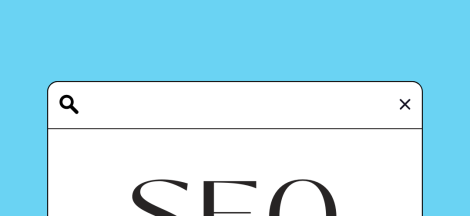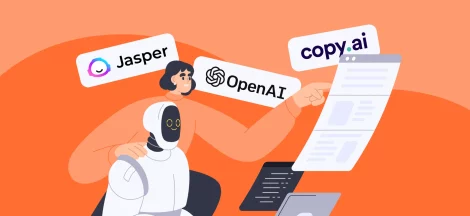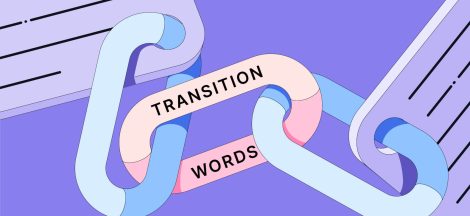Search intention and search engine optimization go hand in hand. However, search intention is an often ignored factor in most SEO strategies.
What a general SEO plan looks like?
You start with keyword research and create a list of high-volume search terms, put together a list of keyword modifiers, and start building content that contains those keywords. While it sounds all good and dandy, this approach completely ignores search intention. Mostly, content writers get instructions from SEOs that talk about word count, which keywords to use, and how many times to use them. Page type and the types of the keyword being used on the page rarely come into consideration, and that’s where most SEOs drop the ball.
The disadvantages of not considering search intention in SEO plans
1. You find it an uphill task to rank for the right keywords.
2. Purchase intent keywords may be mapped to blogs, top of the funnel keywords may be mapped to product descriptions, resulting in a high bounce rate.
3. Even if you manage to rank high and get traffic, your lead generation funnel and sales funnel through organic traffic will be out of sorts.
Types of Intent
While there are many different definitions and classifications, we will go with the basic description here:
1. Top of the funnel: These keywords are used by people looking for information. These people are not looking to buy anything. They are just looking for information, e.g. they may search for ‘my back hurts after long hours at the office’ instead of ‘office chairs with lumbar support.
2. Middle of the funnel: They are not at the buying stage yet but are on their way there. They will look for deeper information. For example, ‘best ergonomic chairs’, ‘office chairs that are good for your back’ etc.
3. Bottom of the funnel: They are at the buying stage and will use purchase intent keywords. For example, ‘office chair reviews’, ‘office chair prices’ etc.
What can you do with this information?
You can map the right keywords to the right pages:
– Top of the funnel keywords is best used on blog posts and articles. These pages need to serve the relevant information to the customer and should not try to sell anything.
– The middle of the funnel keywords is best used in case studies and whitepapers.
– The bottom of the funnel keywords are best used on product pages. These pages should have product details as well as customer testimonials and an option to purchase the product.
How does search intent affect the conversion funnel?
If we divide the type of pages on your website as the top of the funnel, middle of the funnel, and bottom of the funnel, it becomes important for the right person to land on the right page. If your blog is optimized for search intent keywords, you will get traffic but that traffic will be tough to convert into leads or sales. Similarly, if your product pages are optimized for the top of the funnel keywords, they will not convert really well. When a product page is optimized and ranked for purchase intent keywords, that’s when the magic happens. Similarly, if your blog is optimized for the top of the funnel keywords, you will have a very efficient conversion funnel because you got the first step right.
How to identify search intent?
When you do your keyword research, add another column called ‘intent’. So now you have a spreadsheet that contains keywords, search volume, maybe CPC and keyword difficulty, and intent. To identify the bottom of the funnel keywords, search for anything that shows a price-related inquiry, a location-related inquiry, or an appointment-related inquiry.
For example, Dentists in San Francisco, emergency electricians available right now, core i5 laptop prices, latest iPhone deals, etc., all fall in the purchase intent category. As an SEO, when you are working on a website, it is always a good idea to look at historical data, track down purchases made during the last 12 months and see which keywords people used to land on the website and make purchases. For a brand new website, you can use the examples we gave just now as well as work with the website owner (i.e. a subject matter expert) and use tools such as Google Trends and Google keyword planner to find relevant keywords and put them in the right intent category.
Once you include search intent in your SEO strategy, you will plan the right assets for the right keywords. This will optimize your conversion funnel and your organic traffic will start resulting in leads and sales. Try this and let us know what you think.
Suggested:
9 Resonating Content Optimization Strategies to Watch in 2022.





 5G Explained: 9 Facts About The Technology In 2024
5G Explained: 9 Facts About The Technology In 2024
Hey,
Here, I have learned something new about on-page SEO, and thank you for sharing this post with us. I would like to add few points that website speed and mobile responsive websites matter a lot and we should not ignore it and also including multimedia files on our pages we can give more value to our users.
i think keyword research is most important selecting both long tail and short tail is important for the ranking factor, selecting right search volume keyword is need to gain more traffic to website
Hi Andrew wilson, your article is very informative for SEO content, keywords and traffic to the website thanks for sharing your knowledge please keep positing for information….
Thanks for sharing, These tips are really helpful and informative. SEO is the Backbone of Digital Marketing and one must have awareness about how SEO can do wonders for the success of any website as well as helping it get rank higher in initial days. Thus, it is really important that one must be very familiar with SEO tools and therefore it becomes necessary that one must try hands-on SEO jobs. There are many job portals like JOb Vacancy where you can find a job in the SEO domain.
I read every article on your site. because every topic is full fill with a lot of knowledge. thank you, sir.